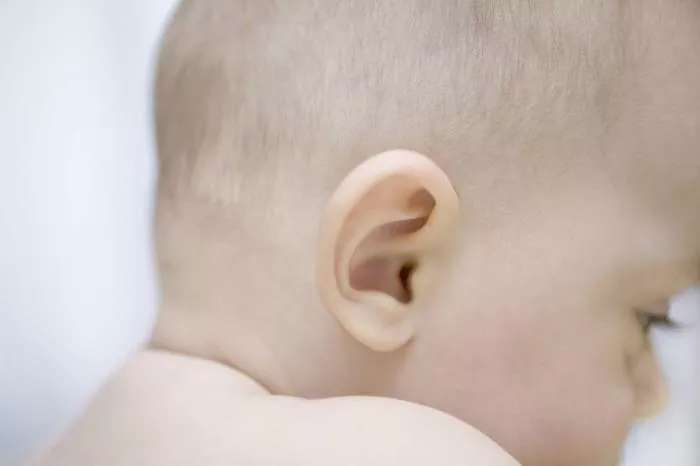Newborn hearing screening is a crucial step in ensuring a baby’s healthy development. Early detection of hearing issues can significantly impact a child’s language development and overall communication skills. This article provides a detailed guide on how to conduct a hearing test for a newborn, including the types of tests used, the procedures involved, and the importance of early screening.
Why Newborn Hearing Screening is Important
Early Detection of Hearing Issues
Hearing problems can affect a baby’s development, including their ability to speak and understand language. Early detection allows for prompt intervention, which can significantly improve outcomes for the child.
Language and Communication Skills
Hearing is essential for language acquisition and communication. Babies with hearing impairments may face challenges in learning to speak and understanding language. Identifying and addressing these issues early can help ensure they develop communication skills effectively.
Preventive Measures
Early screening can prevent delays in speech and language development. It also allows for timely referrals to specialists and access to support services that can aid in the child’s development.
Types of Hearing Tests for Newborns
Otoacoustic Emissions (OAE) Test
The OAE test measures sound waves produced by the inner ear (cochlea) in response to sounds. This test is quick and non-invasive. A small probe is placed in the baby’s ear, and sounds are played. The probe then measures the response from the inner ear.
Procedure: The baby is usually awake but calm. The probe is gently inserted into the ear canal, and sounds are emitted. The test typically takes a few minutes per ear.
Results: If the inner ear is functioning correctly, the test will show a response. Lack of response may indicate a potential hearing issue, but further testing is required to confirm any problems.
Automated Auditory Brainstem Response (ABR) Test
The ABR test measures the brain’s response to sound. Electrodes are placed on the baby’s head to detect brain activity in response to auditory stimuli. This test helps assess how the auditory nerves and brainstem respond to sounds.
Procedure: The baby is usually asleep during this test. Electrodes are attached to the scalp, and sounds are played through earphones or speakers. The test is non-invasive and typically takes 30 to 60 minutes.
Results: The test results show whether the auditory pathways from the ear to the brain are functioning properly. Abnormal results may indicate hearing loss or other auditory issues.
Preparing for the Hearing Test
Choose the Right Time
Schedule the hearing test when the baby is likely to be calm and sleepy. This can make the procedure easier and more accurate. Avoid scheduling the test immediately after a feeding or during a time when the baby is likely to be fussy.
Ensure a Quiet Environment
Conduct the hearing test in a quiet, calm environment to reduce background noise and distractions. A peaceful setting helps ensure accurate test results and makes it easier for the baby to stay relaxed.
Comfort the Baby
Keep the baby comfortable and calm during the test. Gently hold or rock the baby if needed. If the baby is upset or agitated, it may be challenging to obtain accurate results, so ensuring their comfort is essential.
Understanding the Results
Normal Results
OAE Test: A clear response from the inner ear indicates normal hearing. This suggests that the baby’s hearing is functioning properly.
ABR Test: Normal results show appropriate brainstem responses to sound. This indicates that the auditory pathways are functioning correctly.
Abnormal Results
OAE Test: Absence of response may indicate potential hearing issues. It does not confirm hearing loss but suggests the need for further evaluation.
ABR Test: Abnormal responses may indicate hearing loss or issues with the auditory pathways. Further testing and assessment by an audiologist or ENT specialist are required for a definitive diagnosis.
Follow-Up Procedures
Further Testing
If the initial hearing test results are abnormal, follow-up tests are necessary. Additional tests may include a detailed audiological evaluation and imaging studies to assess the extent and type of hearing loss.
Consulting Specialists
Consult an audiologist or an ENT specialist for a comprehensive evaluation if hearing issues are suspected. These professionals can provide a detailed diagnosis and recommend appropriate interventions.
Early Intervention
If hearing loss is confirmed, early intervention is crucial. This may include hearing aids, cochlear implants, or specialized therapies. Early intervention can significantly improve the child’s speech and language development.
Tips for Parents
Stay Informed
Educate yourself about hearing loss and its impact on development. Understanding the signs and symptoms of hearing issues can help you monitor your child’s progress and seek timely help if needed.
Be Patient
The hearing test process can be challenging, but patience is essential. Ensure your baby’s comfort and remain calm during the procedure to help achieve the best results.
Follow Up Regularly
Regular follow-up appointments and screenings are important to monitor your child’s hearing and overall development. Keep track of appointments and ensure that any recommended interventions are implemented promptly.
See also: How Many Layers Should A Newborn Wear To Sleep
Conclusion
Newborn hearing screening is a vital step in ensuring a baby’s healthy development. Understanding how to perform and interpret hearing tests can help parents and caregivers address potential issues early. By following the procedures outlined in this article and staying informed about hearing health, you can support your child’s development and ensure they receive the best possible care. Early detection and intervention are key to helping your baby thrive and develop effective communication skills.


